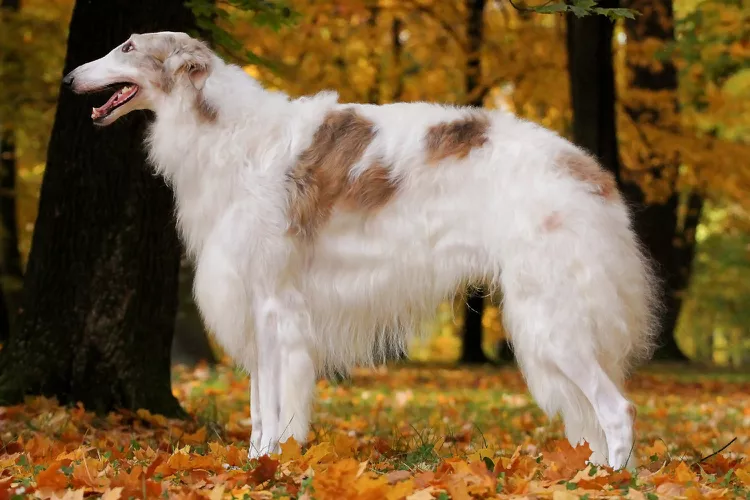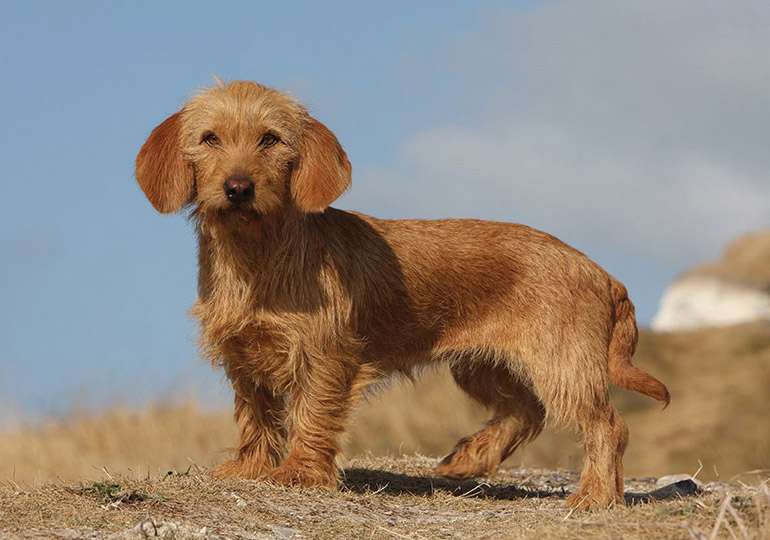
A sighthound-type hunting dog from Russia is called a Borzoi, or Russian Hunting Sighthound. Its previous purpose was wolf hunting, and up until 1936, it went by the name Russian Wolfhound. Large Russian sighthounds called borzois are similar to several breeds from central Asia.
Characteristics
Borzois come in a variety of hues. The Borzoi coat is flat, usually wavy, or just a little curled. The lengthy top coat has different degrees of waviness or curling but is generally relatively flat. In colder areas or throughout the winter, the soft undercoat thickens; in hotter climates, it is shed to avoid overheating. The Borzoi coat is distinctive in terms of texture and distribution across the body. It should have feathering on its tail and hindquarters, as well as a frill on its neck. Gastric dilatation volvulus, or “bloat,” is a condition that can affect borzoi.

Care as a Pet/ In Captivity
Since Borzois are regarded as gentle giants, it’s simple to think of them as a breed that requires little upkeep. Even so, these dogs require regular exercise and careful, positive reinforcement-based training if they are to enjoy happy, healthy lives. Regular grooming is also necessary to preserve the silkiness of this breed’s coats.
Exercise
Large, active dogs like these ones need at least an hour of daily exercise, preferably in the form of lengthy walks. The sight of wildlife like a cat or squirrel on the run is simply too alluring for these powerful sighthound dogs, so it’s essential to maintain a fenced-in yard and only take them for walks when they’re on a leash. This breed excels in canine sports like lure coursing and agility and enjoys engaging in physically demanding outdoor activities with their owners.
Training
Having a Borzoi often calls for a lot of consistency, patience, and humor. These dogs may be both calm and obstinate, which makes them somewhat similar to cats. The Borzoi may be bright, polite, and well-mannered, but they are also autonomous when it comes to training (so training may be somewhat of a challenge). Like other sighthounds, they are particularly sensitive to severe treatment and are prone to getting bored with repetitious and seemingly fruitless exercise. This implies that your Borzoi won’t be able to handle yelling or any other sort of training that relies on punishment. Training with positive reinforcement and early socialization are essential.
Feeding Habits
By giving the Borzoi two or more little meals daily rather than one large meal and refraining from movement for a few hours before and after mealtime, the risk of this sometimes deadly ailment can be reduced.
The Borzoi should thrive on premium dog food, whether it is made commercially or at home under a veterinarian’s guidance. Depending on whether your dog is a puppy, adult, or senior, choose food accordingly. Consult your veterinarian to determine a healthy, safe eating schedule as your dog grows since their age also affects the appropriate number of feedings per day (and the amount of food per meal).
Grooming
Weekly pin brushing of your Borzoi’s coat is recommended. Make sure to get rid of any matting from the area between the legs and behind the ears. Use a wire slicker brush sparingly since it can damage the coat. Due to their tendency to shed heavily during certain seasons, borzoi may require more frequent brushing. Shower him as necessary. In order to get rid of tartar formation and the bacteria that lie inside it, brush your Borzoi’s teeth at least twice or three times every week. Even better than twice-daily brushing is prevention of foul breath and gum disease.
Table





